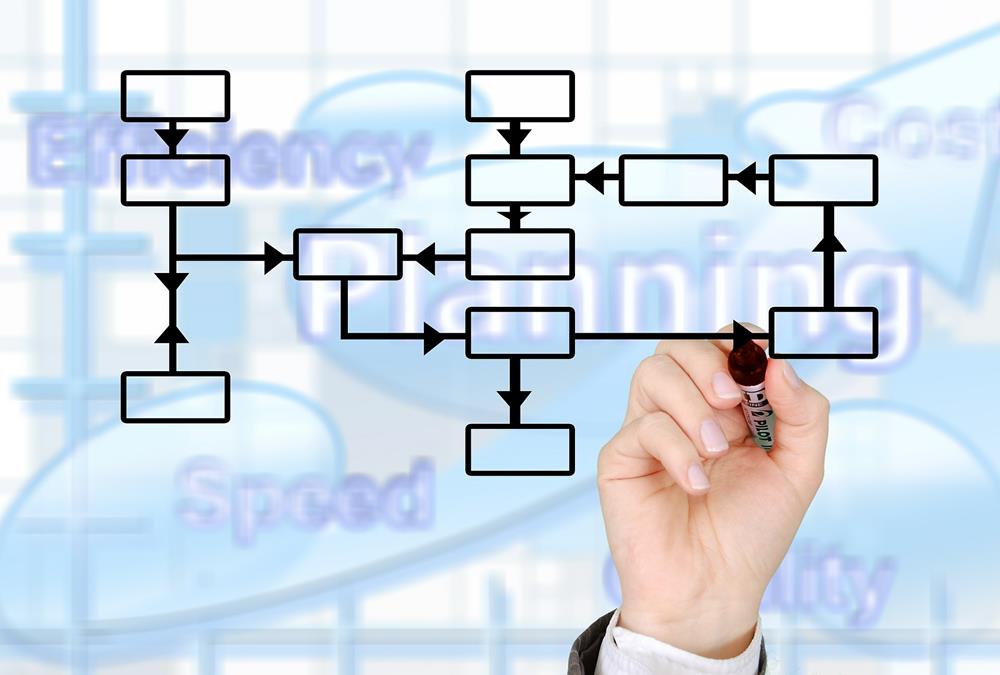- Home
- Business Processes
- Industry Knowledge
- Aerospace Industry
- Automotive Industry
- Banking Domain
- BFSI Industry
- Consumer/ FMCG Industry
- Chemicals Industry
- Engineering & Construction
- Energy Industry
- Education Domain
- Finance Domain
- Hospitality Domain
- Healthcare Industry
- Insurance Domain
- Retail Industry
- Travel and Tourism Domain
- Telecom Industry
- Leadership Skills
- eLearning
- Home
- Business Processes
- Warehouse Management
- Overview of Warehouse Processes
Overview of Warehouse Processes
The basic function of a warehouse is to store goods. This means that they receive deliveries from suppliers, do any necessary checking and sorting, store the materials until it is dispatched to customers. Traditionally warehouses were seen as places for the long-term storage of goods. Now organizations want to optimize their customer experience and try to move materials quickly through the supply chain, so the role of warehousing has changed.
The basic function of a warehouse is to store goods. This means that they receive deliveries from suppliers, do any necessary checking and sorting, store the materials until it is dispatched to customers. Traditionally warehouses were seen as places for the long-term storage of goods. Now organizations want to optimize their customer experience and try to move materials quickly through the supply chain, so the role of warehousing has changed.
Given below are the list of activities that are generally included in today's ‘warehousing’
- Receiving goods from suppliers.
- Identifying the goods, matching them to orders and finding their intended use.
- Unloading materials from delivery vehicles.
- Doing checks on quantity and quality.
- Sorting goods as needed.
- Labelling the goods.
- Moving goods to storage area.
- Holding them in stock.
- Moving materials within warehouse.
- Picking materials for orders.
- Packing and packaging.
- Loading delivery vehicles.
- Dispatching the order.
- Inventory control and finance.
This is a generic layman view of the warehouse process. Now we will look at the same process from warehouse management perspective and do a deep dive into all of the warehouse activities understanding their drivers and industry wide used execution model.
Warehouse Management Work Processes
Warehouse management is one facet of supply chain management. The Warehouse management includes a wide range of sub-processes and activities to support the warehouse facility operating at an optimal level, at any time. Warehouse processes need to be integrated with other business processes such as transportation, manufacturing, quality control, purchase, transfer, sales, and returns. Any store, factory, or distribution center employs eight high-level processes for physical inventory:
- Inbound Receiving Process
- Inbound Put-away
- Warehouse Picking Process
- Warehouse Packing Process
- Outbound Shipping Process
- Warehouse Counts Process
- Warehouse Returns Process
- Warehouse Labelling Process
- Warehouse Staffing and Roles
- Miscellaneous Warehouse Processes
- Warehouse Reporting
|
Inbound Receiving Process |
When products arrive at a facility, there need to be a defined process to let them in. The process for accepting inventory when it arrives is called "Receiving". |
|
Inbound Put-away |
After products have been received and passed a quality inspection, they need to be stored so that you can find them when you need them. This process is called put-away. |
|
Warehouse Picking Process |
Order picking is the process of selecting items from a warehouse , to fulfill customer orders. |
|
Warehouse Packing Process |
The packing process allows you to validate and pack products into containers. The packaging is intended to provide protection for the item as it is being handled in the warehouse or when the item is being shipped. |
|
Outbound Shipping Process |
The final step is to send ship loads out of the warehouse once all the work that is associated with those loads has been completed. |
|
Warehouse Counts Process |
Counts are typically done to eliminate mismatches between the system and the actual inventory. |
|
Warehouse Returns Process |
A return is the process of handling the return of products from a customer to the distribution center. |
|
Warehouse Labelling Process |
Labelling is done to streamline warehouse organization and make sure workers can easily identify every section, rack, and carton. |
|
Warehouse Staffing and Roles |
Staffing is concerned with the planning for expected workload and determine the number of resources required to complete each activity. |
|
Miscellaneous Warehouse Processes |
Miscellaneous processes to manage the warehouse operations. |
|
Warehouse Reporting |
Preparation and availability of right kind of operational and inventory reports across the warehouse for effective control of warehouse operations. |
Related Links
You May Also Like
-
To stay competitive in today’s tough market, the location of your warehouse is vital. To grow retail business need to offer to customers faster and affordable shipping time, which is dependent on the warehousing location as the location of the warehouse affects the transit time to ship orders to customers.
-
One of the warehousing best practices that retailers like Walmart, Amazon, and Target have adopted is known as cross-docking. During this process the inbound products are unloaded at a distribution center and then sorted by destination, and eventually reloaded onto outbound trucks. In real parlance, the goods are not at all warehoused but just moved across the dock (hence the name).
-
Warehouses may seem like a simple, straightforward concept, but they actually include a variety of different types of warehouses that all have their own niche. The type of warehousing that’s right for you depends on your specific industry, location, and needs. From private warehousing, distribution centers, and climate-controlled warehouses, there’s an option to suit every business.
-
Overview of Warehouse Processes
The basic function of a warehouse is to store goods. This means that they receive deliveries from suppliers, do any necessary checking and sorting, store the materials until it is dispatched to customers. Traditionally warehouses were seen as places for the long-term storage of goods. Now organizations want to optimize their customer experience and try to move materials quickly through the supply chain, so the role of warehousing has changed.
-
After products have been received and passed a quality inspection, they need to be stored so that you can find them when you need them. This process is called putaway. The spot where you store a particular product is called a location. One section of a warehouse might have small locations for light items; another area may have large locations on the floor for heavy items.
-
Before shipping, businesses need to make sure that the items will arrive in good condition. Packaging is a form of protection against environmental threats that the product will face from the time it leaves warehouse facility until the time it reached the customer. The packaging is intended to provide protection for the item as it is being handled in the warehouse or when the item is being shipped.
-
When a customer wants a product that has been stored in the warehouse, the same need to be picked off the shelf (or off the floor) and get it ready for shipping. Depending on how big is the warehouse, picking can take a while. (Many distribution centers cover more than 1 million square feet.). Hence, warehouse order picking methods are an important aspect within any warehouse.
-
Overview of Third-Party Logistics
Third-party logistics (abbreviated as 3PL, or TPL) is an organization's use of third-party businesses to outsource elements of its distribution, warehousing, and fulfillment services. A third-party logistics provider (3PL) is an asset-based or non-asset based company that manages one or more logistics processes or operations (typically, transportation or warehousing) for another company.
-
Resource Planning is the process of planning for expected workload and determining the number of resources required to complete each activity in the warehouse. There are many types of warehouse positions, and they also vary by the employer, the scale of operations and location. Discussed here are generic positions applicable to warehouse management processes.
-
When products arrive at a facility, there need to be a defined process to let them in. The process for accepting inventory when it arrives is called "Receiving". Any warehousing operation must be able to receive inventory or freight from trucks at loading docks and then stow them away in a storage location. Receiving often involves scheduling appointments for deliveries to occur, along with unloading the goods and performing a quality inspection.
Explore Our Free Training Articles or
Sign Up to Start With Our eLearning Courses

About Us
Learning
© 2023 TechnoFunc, All Rights Reserved











